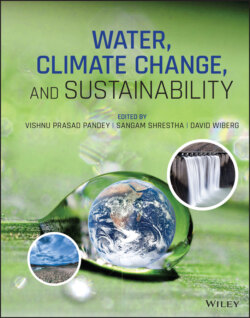Читать книгу Water, Climate Change, and Sustainability - Группа авторов - Страница 18
1.3 FORMULATION AND GOVERNANCE OF SDGS
ОглавлениеFormulation of SDGs was identified as the post‐MDG agenda in the UN Summit on Sustainable Development, also known as Rio+20, held in June 2012 in Brazil with the theme of “The Future We Want”. With the objectives to produce a set of universal goals that meet the urgent environmental, social and economic challenges facing the world, the Rio+20 summit also outlined four principles for developing the goals. After subsequent endorsement by heads of the governments and high‐level representatives from al the UN members, the process of formulating SDGs was initiated by forming a 30‐member Open Working Group (OWG) through the UN General Assembly. It took nearly three years for drafting, negotiation, and formalization of SDGs through the UN Sustainable Development Summit held in September 2015 in New York. The 17 SDGs (Figure 1.2), the global goals for 2015–2030, provide a shared blueprint for peace and prosperity for people and the planet, now and into the future (UN 2020).
The adoption 17 SDGs and 169 targets present a novel approach of goal setting at the global scale characterized by inclusive, non‐binding, weak institutional arrangements, and the extensive leeway for individual countries (Biermann et al. 2017). The high flexibility exercised through a bottom‐up process in formulating SDGs and its adoption also raises a big question mark on the effective implementation of a long list of SDG targets and indicators. The extent to which the SDGs will be truly transformational, however, depends on how they are implemented. Similarly, there is a confusion among governments in finding an entry point for implementing SDGs (Elder and King 2018).
Figure 1.2 The water centric 17 Sustainable Development Goals (SDGs).
Source: Makarigakis A.K and Jimenez‐Cisneros BE (2019).
The SDGs offer accountability the present generation has towards the next generation that is to allow the next generation to meet their needs, however, the limitation is that it focuses exclusively on resources and economics. The multi‐dimensionality of SDGs indicates the growing complexity in the path of achieving sustainable development. A complex web of interlinkages is one of the trademarks of SDGs and many of its targets are vague and difficult to quantify (Biermann et al. 2017; Shivakoti 2019). SDGs are ambiguous on, and lack guidelines for, the entry points for their implementation, means and ends are mixed, and how to evaluate cause‐effect relationships between goals or targets is not clear (Shivakoti 2019). There are also numerous “blind spots”, i.e. targets that countries have limited knowledge on in their national contexts (UNESCAP/ADB/UNDP 2018). SDGs, as a compilation of sustainability issues and challenges, could serve as a reference to determine whether important interactions have been overlooked while implementing a target or a goal. Still SDGs provide few clues on how essential interactions could be determined ex‐ante and subsequently dealt with.
